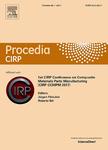版权所有:内蒙古大学图书馆 技术提供:维普资讯• 智图
内蒙古自治区呼和浩特市赛罕区大学西街235号 邮编: 010021

作者机构:Fraunhofer Institute for Mechatronic Systems Design IEM Zukunftsmeile 1 33102 Paderborn Germany Chair Advanced Systems Engineering University of Paderborn Fürstenallee 11 33102 Paderborn Germany
出 版 物:《Procedia CIRP》
年 卷 期:2020年第91卷
页 面:93-100页
学科分类:12[管理学] 1201[管理学-管理科学与工程(可授管理学、工学学位)] 08[工学]
主 题:Augmented Reality Use Cases Classification
摘 要:Due to rapid technical advancements and the increasing diffusion of information and communications technologies, Augmented Reality (AR) has left its fledgling stages and is now on the verge of a breakthrough. Especially in industrial applications, AR holds great potentials for performance improvements: By enriching real world environments with context-specific virtual information, manual operations can be carried out more efficiently, costly mistakes can be avoided and the mental effort for transferring information from an abstract representation (e.g. monitor) to the physical world can be significantly reduced. However, a lack of transparency regarding the equally numerous and manifold applications and benefits makes it difficult for companies to weigh the impact of AR for their business. Existing classification approaches in scientific literature mainly focus on technical aspects of AR, neglecting information essential for the strategic planning of AR. The current paper aims at filling this gap by providing a classification of industrial AR use cases. The basis is a classification scheme consisting of eight classification criteria, each with several predefined characteristics, specifically tailored to the industrial use of AR. In a comprehensive literature research, 75 industrial application examples for AR were determined and described using the classification scheme. By performing a cluster analysis and multidimensional scaling, the AR application examples were grouped according to their similarity, resulting in 16 clusters, each representing a generic use case for AR. Further information was researched for each use case (e.g. benefits, opportunities, risks) and summarized in a profile. Thus, the paper provides two core results: (1) A classification scheme for describing industrial AR applications, extending the state of the art with an use-case-related classification approach. (2) A catalogue with 16 AR use case profiles, providing transparency on industrial ap